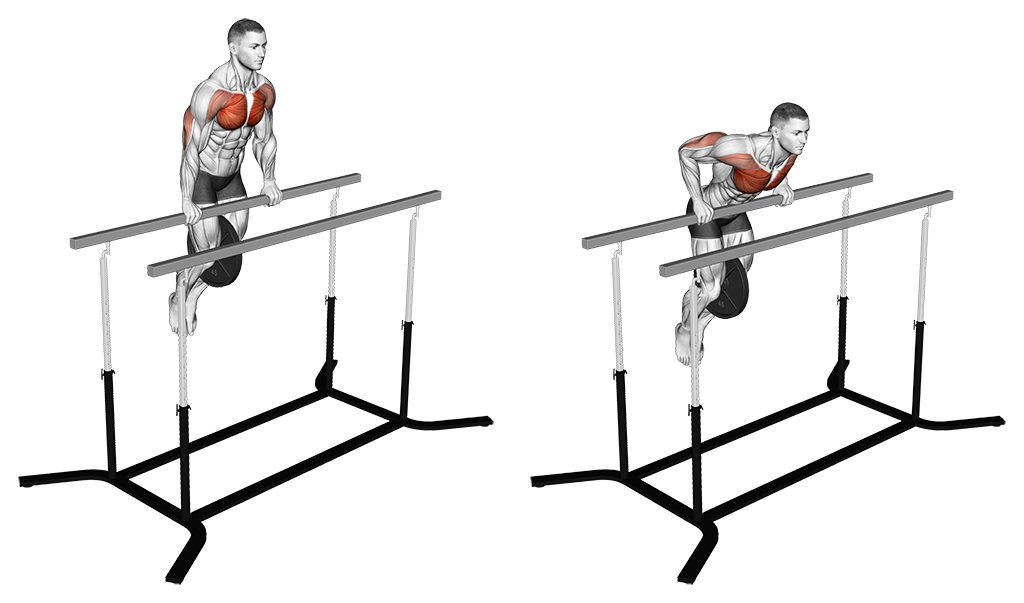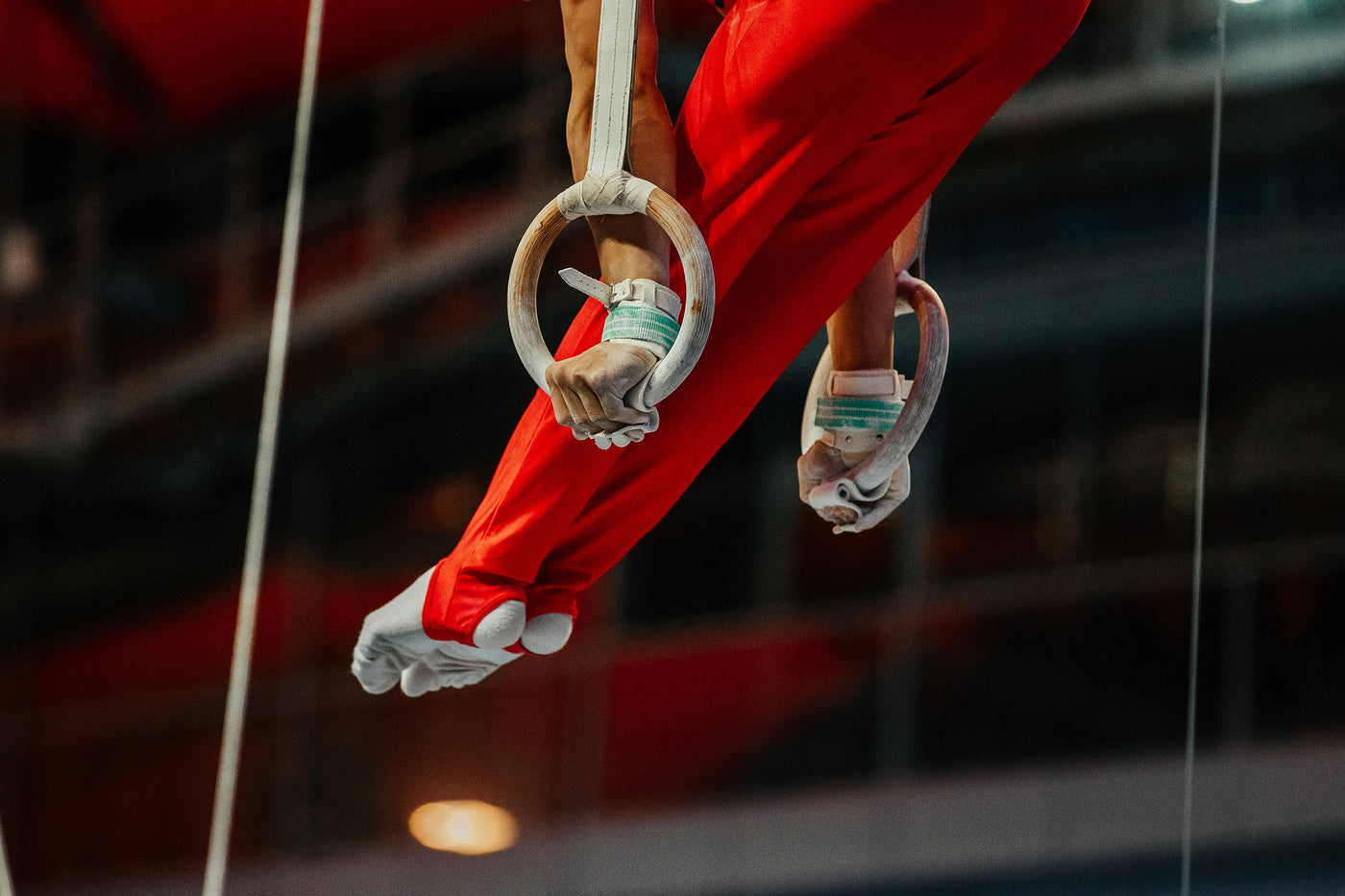Exercise Anatomy
Bar Dip with a Pronated Grip
The Bar Dip with a pronated grip is a potent upper body exercise targeting the triceps, chest, and shoulders. With palms facing forward, this variation places a unique emphasis on triceps engagement while contributing to overall upper body strength. Incorporate Bar Dips with a pronated grip into your routine for a straightforward yet effective way to sculpt your arms and build functional strength. This exercise offers a versatile and challenging option for those seeking a powerful upper body workout.

Major Muscles and Actions Involved
Executing a Bar Dip with a pronated grip initiates the primary joint action of elbow extension as you push your body upward. This movement actively engages the triceps brachii, pectoralis major in the chest, and the anterior deltoids in the shoulders. The pronated grip, palms facing forward, places a distinctive emphasis on triceps involvement, making it a targeted exercise for building strength and definition in the upper body.

Sports Uses
The Bar Dip with a pronated grip directly benefits athletes engaged in various sports that demand upper body strength and pushing power. Gymnasts, who require exceptional upper body control and strength for maneuvers on parallel bars and rings, find this exercise beneficial. Martial artists benefit from the triceps and chest engagement, enhancing their ability to execute powerful strikes and grapples. Additionally, athletes in sports like basketball and volleyball, where explosive upper body strength is essential for actions such as blocking and shooting, can enhance their performance through the targeted muscle engagement provided by Bar Dips with a pronated grip. Integrating this exercise into training routines contributes to improved pushing strength, endurance, and overall upper body function, making it a valuable addition for athletes across diverse disciplines.
Exercise Tips
- Technique: Begin the Bar Dip with a pronated grip by fully extending your arms and maintaining a straight body position. Execute the movement in a controlled manner, avoiding excessive swinging.
- Range of Motion: Strive for a full range of motion, lowering your body until your upper arms are parallel to the ground. Ensure complete elbow extension at the top of each repetition.
- Amount of Weight Used: Initially, focus on bodyweight Bar Dips with a pronated grip. Gradually increase intensity by incorporating additional weight using a dip belt or resistance tools.
- Grip: Utilize a pronated grip with palms facing forward. This grip variation emphasizes triceps engagement and contributes to chest and shoulder development.
- Variations: Experiment with variations, such as adjusting the width of the bars to target different muscle groups. Adding pauses at the bottom or top of the movement can intensify muscle engagement.
- Unique Muscle Involvement: Bar Dips with a pronated grip primarily target the triceps brachii, pectoralis major, and anterior deltoids. The pronated grip accentuates the activation of the triceps, making it an effective exercise for triceps development.
- Breathing: Inhale as you lower your body, and exhale during the effort of pushing yourself back up. Maintain a steady breathing rhythm to enhance performance and oxygen flow during the exercise.
Mastering these tips will optimize your Bar Dips with a pronated grip, ensuring a targeted and effective upper body workout.
Bar Dips vs Pushups
Bar dips and push-ups are both effective upper body exercises, but they differ in mechanics and muscle engagement. Bar dips primarily target the triceps, chest, and shoulders by requiring vertical pushing against body weight. This exercise demands more shoulder extension and engages the lower chest.
On the other hand, push-ups involve horizontal pushing, engaging the chest, shoulders, and triceps. They also recruit stabilizing muscles like the core. Push-ups are versatile and beginner-friendly, while bar dips may require more strength and control. Both exercises contribute to upper body strength and endurance, but they offer distinct variations in movement and muscle emphasis.

Want to Learn More?
Try our premium ebook, Exercise Anatomy and Biomechanics: Ultimate Guide.
Satisfaction guaranteed.
